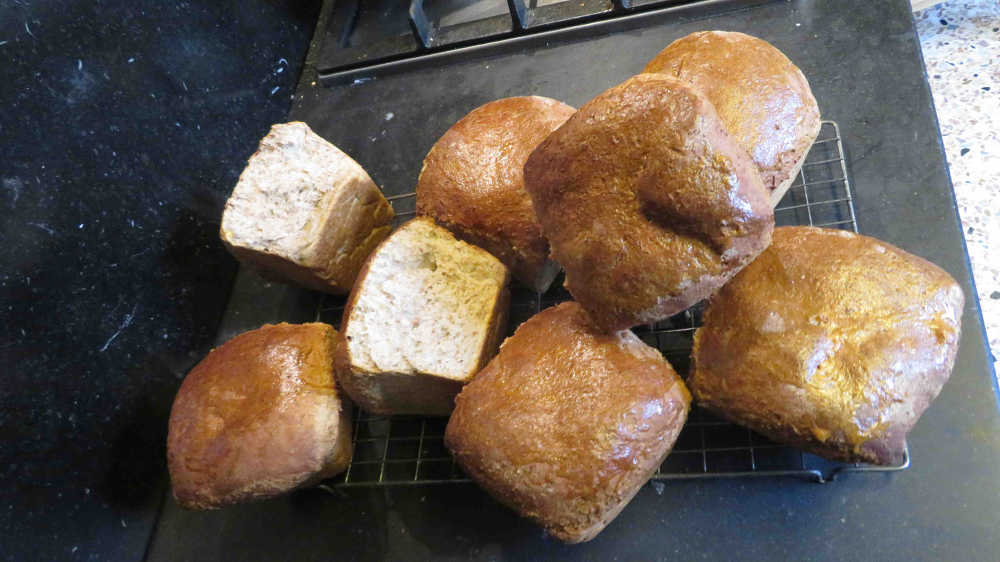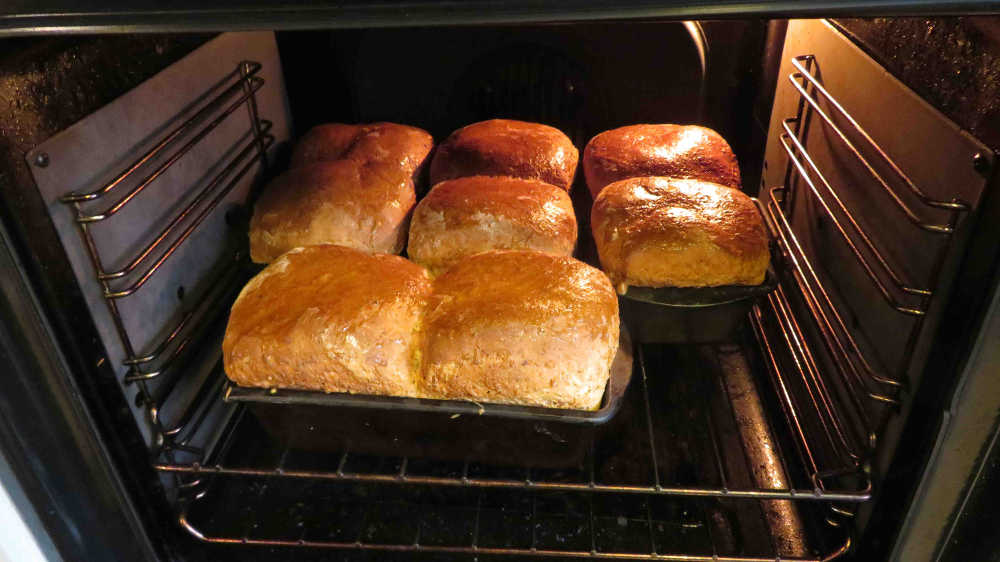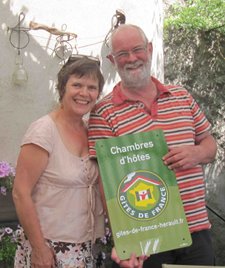An Irish Chef in France - Wholewheat Chestnut Bread

Euro-Toques chef Martin Dwyer, is much missed in Ireland since he and his wife Sile sold their eponymous restaurant in Waterford and moved to France. They now live in the Languedoc, where they take guests - and feed them very well.
This month: Wholewheat Chestnut Bread.
This is really a marriage between Languedoc and Ireland.
Since we moved to France from Ireland to open our Chambre d’Hote here in the Languedoc we have been very aware that, in our own small way, we are flying a flag for Ireland, not just for Ireland but in particular for Irish food.
For all the years when I ran my restaurant in Waterford one of the most common questions I was asked was “What sort of food do you cook?” and my answer, was usually “French, but with Irish ingredients and a certain Irish twist”
That, of course is not a possible answer here in France as, being a supporter of all things local, I have no intentions of importing my ingredients from Ireland - well possibly with one or two tiny exceptions.
The part of Languedoc where live is locally known as La Vallee d’Orb and did, so local history books tell me, grow wheat during the 1800’s but not for the last couple of hundred years when all available land is used for the cultivation of vines.
Consequently all the wheat used by the bakers here has been imported from the wheat belt which stretches across the middle of France, the Charente and the Vendée. But of course the peasants in the northern half of the Languedoc, the area which stretches into the great plateau in the centre of France, Le Massif Central, were not going to deprive themselves of France’s staple so they made their flour from the Chestnut which grows in the woods and forests on the slopes of the Haut Languedoc.
The first time I saw evidence of this was seeing some extraordinary shoes in a museum in Olargues, a village quite near our house here. These had long savage looking spikes attached to the soles and at first glance seemed instruments of medieval torture. They were, it turned out, Chestnut shelling shoes. The peasants scattered the fruits of the tree on the ground and stamped on them with these boots to remove the shells - a true sign of how far the French peasant is prepared to go to secure his daily bread.
I was however delighted to discover that if I was to try and emulate these bread makers I wouldn’t have to go to the same lengths and that, with quite a lot of searching, chestnut flour was still available to buy, ready shelled, peeled and ground, in the Languedoc.
I am now going to digress, a little, back to my original point about exploring my Irish traditions here in France.
I am going to speak some words of heresy and alienate all of my French friends by confessing something: The world famous French Baguette, the crisp white loaf which is the symbol of France, the sine qua non of French Breakfasts, begins to pall after a while and this particular Irishman began to long for some bread which he could chew, something with a bit of texture, some whole wheat Irish bread.
The French effort at whole wheat flour is not at all to our robust Irish tastes. I actually talked to a French miller about this and he explained that yes the French always sieve their coarse bran and chaff from their flour and discard it. “This” Monsieur Le Meunier explained to me “cannot be digested by the human body, only by animals” - and no amount of talk of roughage would change his mind.
So I started to import some Irish whole wheat flour. Import is of course a very grand word for getting a friend, from time to time, to bring me over a bag in their luggage.
I started making soda bread but honestly, whether it was the quality of the buttermilk or the climate, it just never worked well here.
At about the same time I started experimenting with chestnut flour and was having a similar lack of success. The chestnuts are not high in gluten so the bread was ending up wet and flat.
I spoke one day, in a market, to a German who was selling chestnut flour and he agreed that an all chestnut bread wasn’t to our modern tastes “You should use about 20% chestnut to strong flour” he suggested “that gives a very good texture.”
So I did, but the results still didn’t satisfy me.
Then I had my eureka moment and tried a bread combining Strong French Flour, Irish Wholewheat and Languedoc Chestnut flour.
Success at last. This is the one I now bake all the time and here is the recipe.
I usually divide the dough into eight (a scales is best to use for this) and put two pieces into each tin – these pull apart easily after cooking as this gives me eight small loaves which freeze well and are a perfect size for breakfast.
You will need 4 x Ikg loaf tins which you oil liberally with olive oil.

Wholewheat Chestnut Bread.
500g Wholewheat flour 1300g Strong White Flour 200g Chestnut flour Teaspoon Salt 100g Fresh Yeast 150ms Olive Oil
1.25 ltrs Warm Water
Dissolve the yeast in some of the warm water and mix the flours with the salt.
Mix the oil with the warm water and yeast mixture and add to the flours and make into a dough in the bowl.
Turn onto a floured board and knead for 5 minutes.
Cut into eight pieces and fit two in each 1kg tin.
Leave to rise for at least an hour.
Bake in a hot oven, preheated to 420ºC, for thirty minutes
(If you want them to have a glaze just paint with some egg wash after 15 minutes in the oven)
After 30 minutes shake out of the tin and bake at 400ºC for a further 15 minutes,
Remove from the oven and cool on a rack.
-------------
 Martin Dwyer started cooking professionally over 40 years ago in the legendary “Snaffles Restaurant” in Dublin. After a time in a Relais Chateau in Anjou and in “The Wife of Bath” in Kent he opened his own much acclaimed restaurant, “Dwyers”, in Waterford in 1989. In 2004 he sold this and moved south to France where he and his wife Síle bought and restored an old presbytery in a village in the Languedoc. They now run Le Presbytère as a French style Chambre d’Hôte. Martin however is far too passionate about food to give up cooking so they now enjoy serving dinner to their customers on the terrace of Le Presbytère on warm summer evenings. Martin runs occasional cookery courses in Le Presbytère and Síle’s brother Colm does week long Nature Strolls discovering the Flora and Fauna of the Languedoc.
Martin Dwyer started cooking professionally over 40 years ago in the legendary “Snaffles Restaurant” in Dublin. After a time in a Relais Chateau in Anjou and in “The Wife of Bath” in Kent he opened his own much acclaimed restaurant, “Dwyers”, in Waterford in 1989. In 2004 he sold this and moved south to France where he and his wife Síle bought and restored an old presbytery in a village in the Languedoc. They now run Le Presbytère as a French style Chambre d’Hôte. Martin however is far too passionate about food to give up cooking so they now enjoy serving dinner to their customers on the terrace of Le Presbytère on warm summer evenings. Martin runs occasional cookery courses in Le Presbytère and Síle’s brother Colm does week long Nature Strolls discovering the Flora and Fauna of the Languedoc.
Le Presbytère can be seen at: www.lepresbytere.net;
email: martin@lepresbytere.net
Twitter: www.twitter.com/DwyerThezan





There are currently no comments
Leave a comment
Not a member? Register for your free membership now!
Or leave a comment by logging in with: